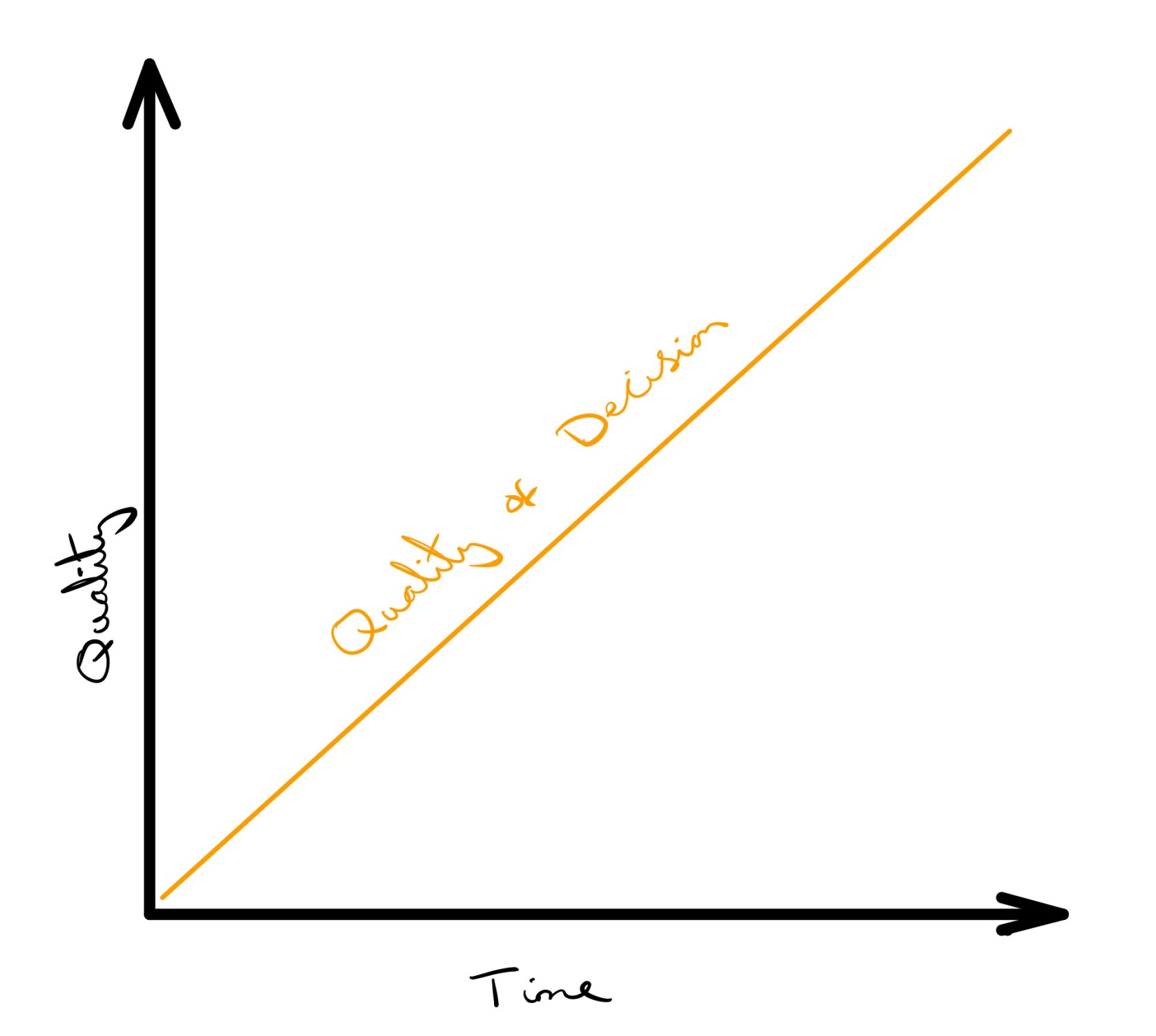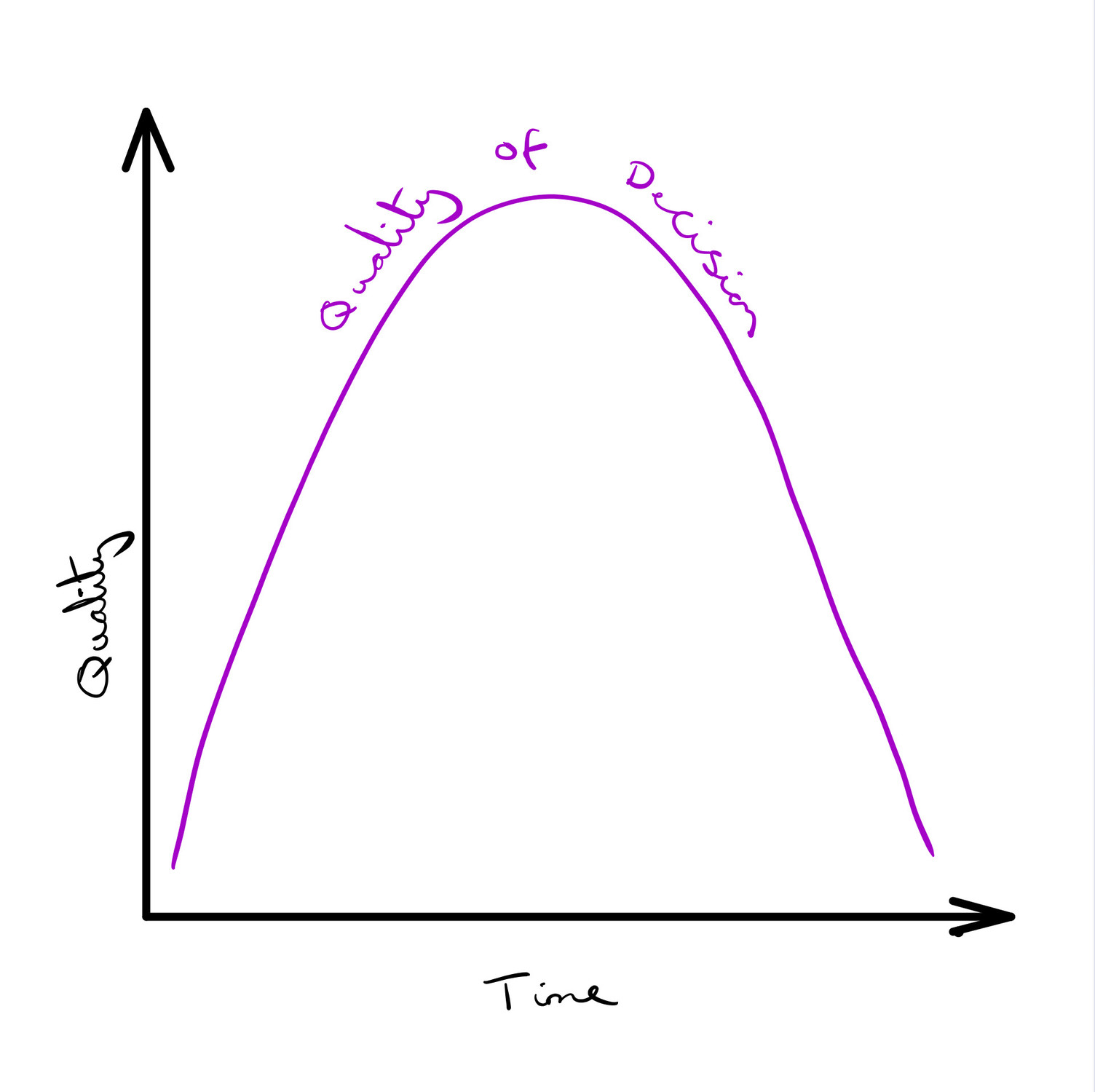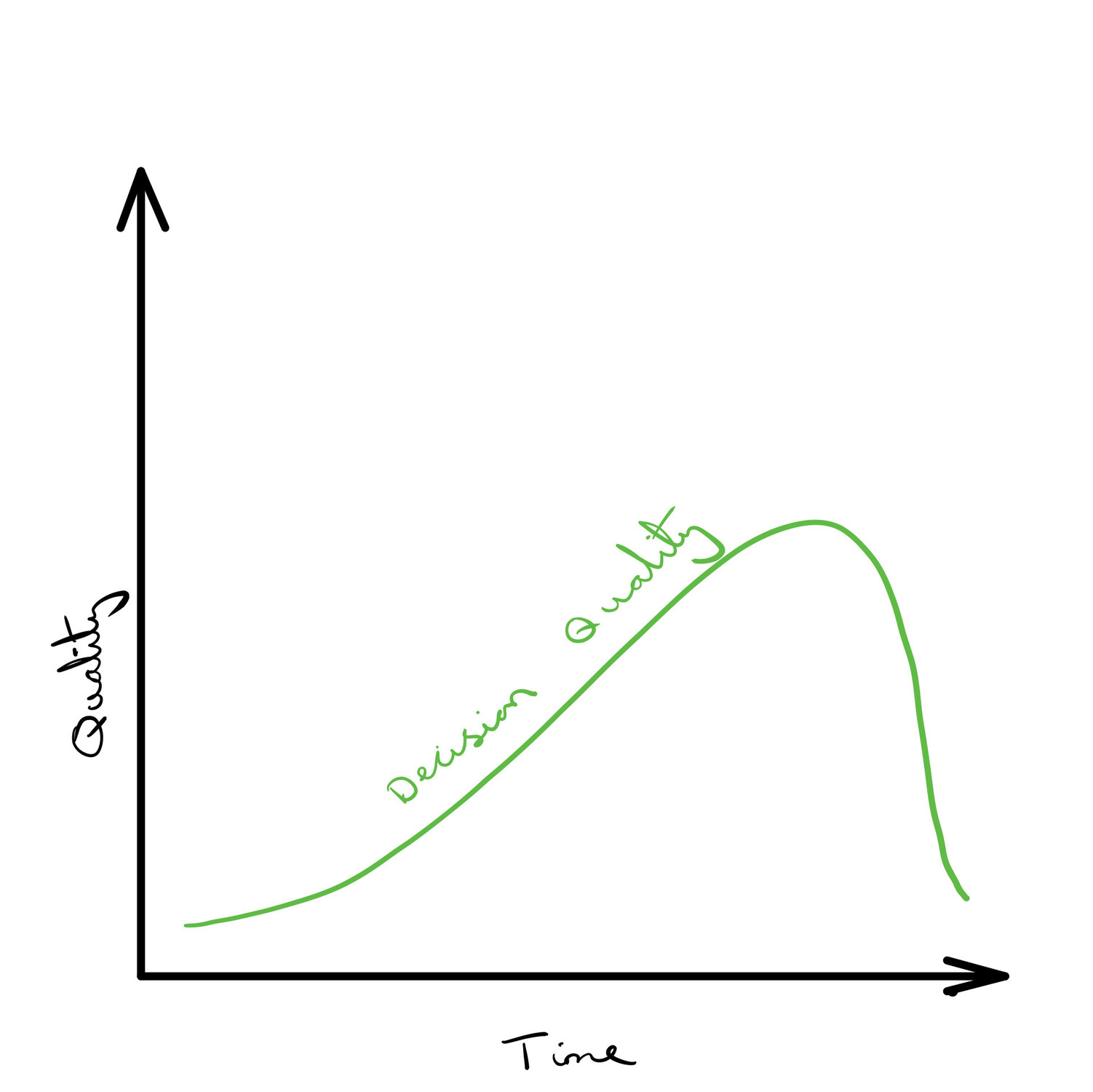There’s a place for everything – and everything in its place? Or…?
Ever get the feeling that life is preordained? That everyone, and everything, fits neatly into…
I have been mulling over the art of decision making, recently. I imagine most decision-makers’ goal is to achieve the highest quality decisions in the shortest possible space of time. This speed aspect is particularly relevant, nowadays, due to the pace of change we all face. We can spend as much time as we like in deliberation and analysis, but if our decision is made too late, so late that we miss the opportunity, it’s a poor quality decision. The quality of a decision must, logically, be judged on its outcome; its ability to get us something that we didn’t have before that makes our lives better in some way. Likewise, if we make a snap decision from the hip, without thinking it through carefully and factoring in all the relevant variables, there is, arguably, a low probability of success. We have to rely upon pure luck if it is to improve our situation. Of course, this all depends upon the complexity of the decision. For the purposes of this article, let us assume a decision of at least moderate complexity.
Here’s the initial graph I drew up to illustrate the relationship between duration of deliberation and quality:

However, after further thought, I hypothesised that one must eventually reach some point of diminishing returns where the extra time spent pontificating must start having a deleterious effect on the final quality of the decision. So, I redrew the graph, coming up with the following alternative:

Subsequent to these musings, I discussed the matter with a client and she proposed that her curve would probably look more like this:

Consequently, this made me realise that each of us probably has a unique decision-making curve, dependent upon our habits. What would your curve look like? Please share, here, as either a picture or maybe some comments to help us all gain further insight from each other.
Of course, there are other factors at play, too. For example, the amount of time we spend in coming to a satisfactory conclusion must have some effect on our peace of mind. And that’s important, too, surely! The longer we deliberate, the more comfortable we may become with our chosen line of action, purely because we attain more clarity… within reason. Don’t let this be an excuse to procrastinate!
As a country, we are not known for our high productivity. There are probably many reasons for this but maybe poor decision making is at the root of the issue.
So, what are the practical implications of all this for each of us? Well, essentially, we need to find our own particular sweet spot which satisfies our need for peace of mind, through the clarity achieved by an appropriate amount of research and reasoning, and the speed with which we need to respond by making a decision and acting on it. Our individual attitudes to risk will play a big part in this. All other things being equal, someone with a greater tolerance to risk will be able to seize the best opportunities… but they may also have the most to lose. Those who require a higher degree of comfort may well miss some opportunities but will probably live life less like the proverbial cat on a hot tin roof. We need to know ourselves well in order to hit the right balance. Obviously, the industry sector we work in will often decide this for us. If we want a fulfilling job, we need to match our psychological preferences to the industry we work in. Otherwise, we’re in for a rough ride. Of course, habits can be changed. This is where a coach can help.
Don’t forget to share your own decision-making curve with us all.
For guidance and advice on any of the concepts outlined in this blog, please contact me via any of the following methods:
Telephone: 01522 700600
Email: sean@refinity.co.uk
Ever get the feeling that life is preordained? That everyone, and everything, fits neatly into…
[Missing Image] Can you know the unknown? A few years ago – well, actually, about twenty years…